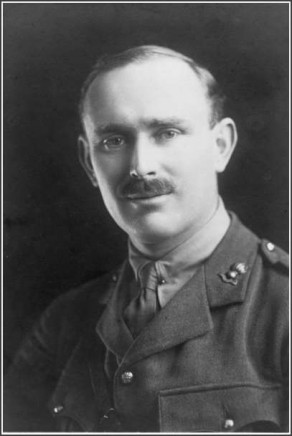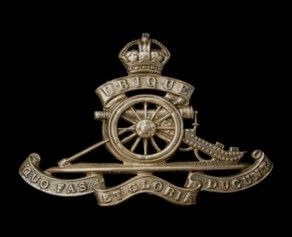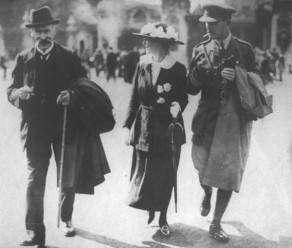DE RUVIGNY'S ROLL OF HONOUR 1914-1918 – Part Five
MURRAY-MACGREGOR, ATHOLL, M.C., Major, South African Heavy Artillery, yr. s. of Major Charles Frederick Murray-MacGregor, of 31, Lansdown Crescent, Cheltenham, by his wife Mary Douglas, dau. of (–) Crossman; b. Cape Town, South Africa, 25 Aug. 1884; educ. Dean Close, Cheltenham; joined the Scottish Horse 1 April 1902, retiring in the following Aug., when he engaged in farming near Port Elizabeth; volunteered for active service after the outbreak of war, and enlisted in the South African Heavy Artillery 1 Feb. 1915; took part in the German South West Africa Campaign; returned to England with a commission, gazetted 2nd Lieut. 1 Aug. 1915; promoted Lieut.; Capt., and Major 3 May, 1917, when he commanded his battery; was transferred to the 172nd Siege Battery. He proceeded to Italy in the following Nov., where he served on the Piave and Asiago fronts, and died at No. 24 Casualty Clearing Station 7 Dec. 1918, of influenza, contracted while on active service. Buried at Monteccio, near Vicenza. He was mentioned in Despatches, and awarded the Military Cross [London Gazette, 3 June, 1919], for gallant and distinguished service in the field. He m. at Marton, near Skipton, 29 Dec. 1917, Gladys, yr. dau. of Lionel Dewhurst, of Marton House, Marton, near Skipton, and had a dau., Elinor Atholl, b. (posthumous) 1 June 1919.
THE HISTORY OF THE SOUTH AFRICAN FORCES IN FRANCE, by John Buchan 1920
The 74th Siege Battery, R.G.A.
The 74th Battery landed at Havre on April 30, 1916, under the command of Major Pickburn. It proceeded to Authuille, and on 4th May took up position at Bienvillers-au-Bois. On the first day of the First Battle of the Somme its four guns fired 1,733 rounds, supporting the unsuccessful attack of the infantry at Gommecourt. It then took over the position of the 73rd Battery, and later on, 27th August, moved to the Martinsart-Aveluy road for the operations against Thiepval. On 7th October it was in the orchard at Colincamp, a place without cover and a favourite target for the enemy. There it spent some desperate weeks. On 7th November the battery-commander, Major Pickburn, was killed. On the 20th November the enemy kept up a severe bombardment all day, and four gunners lost their lives. It was the same on the 29th, when an amour-piercing shell penetrated to a cellar protected by seven feet of earth and bricks, and killed the three occupants. The position was really untenable for a heavy battery, but it was held till early December, when a move was made to Auchonvillers. It presently moved to Gouy-Artois, and then to Arras and the Faubourg d’Amiens. In the early weeks of the year it was at Rivière, opposite Ficheux, and then again in a suburb of Arras.
In the battle of Arras the Battery supported the advance of the South African Infantry Brigade, and on the 12th its right section was in the old German line at Point de Jour, supporting the fighting in the Oppy, Gavrelle, and the Rœux area. At the time they were the farthest forward siege guns on the British front. There the Battery continued till the battle died away. Major Tamplin was gassed and returned to England, Major Murray-MacGregor taking over command. By 5th July the whole Battery had moved to the Ypres neighbourhood, where it took up ground on the canal bank near ‘Shrapnel Corner.’ There, during the first stages of Third Ypres, it suffered the usual fate of combatants in the Salient. Major Murray-MacGregor was succeeded in the command by Major G.M. Bennett. Presently it moved to a position on the Verbranden-Molen road, and a little later to Hooge. This was its station during the remainder of the battle. It had many casualties from shell-fire and gas, and the reliefs coming by the Menin road had to face an incessant enemy barrage. The total men available on each shift were only seventeen for all four guns, and had not three of the guns been knocked out the task would have been impossible. When at last the battery was withdrawn, it was reduced to 1 gun and 70 men.
On the 21st December the Battery, now brought up to strength, went back to the line as part of the 50th (S.A.) Brigade, R.G.A.
England & Wales, National Probate Calendar (Index of Wills and Administrations), 1858-1966
1921
MACGREGOR Atholl Murray of Decannia Alexandria Cape Province South Africa major South African Heavy Artillery died 7 December 1918 in Italy Probate London 14 February to Gladys Murray MacGregor widow. Effects £832 3s. 7d.









No comments yet.